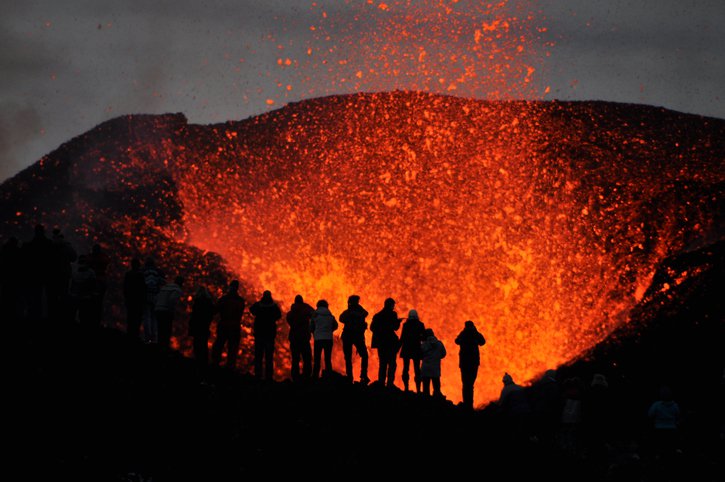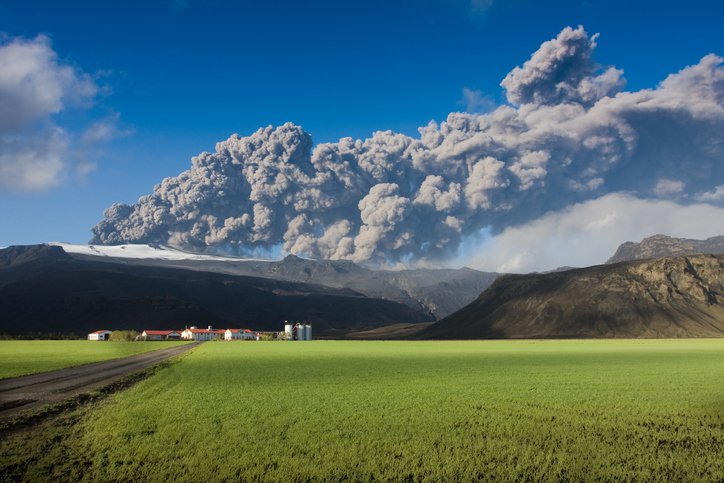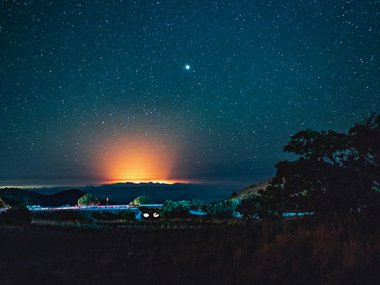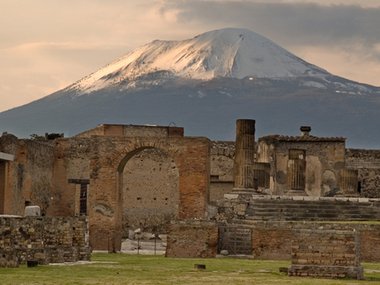Volcano: Eyjafjallajökull
Eyjafjallajökull? Can you pronounce it? It’s: “AY-uh-fyat-luh-YOE-kuutl(-uh).” If that helps, good for you! Even after hearing a native Icelander pronounce it, it’s still hard to wrap my tongue around that many syllables.

Image credit: Getty Images
First, a little geography. Iceland, sometimes called the land of fire and ice, is an island in the North Atlantic Ocean between Greenland and Europe. It’s a little smaller than Virginia with a population similar to Chesterfield County. Located at 65°N latitude, Iceland’s subpolar climate would be brutally cold if not for the Gulf Stream ocean current moderating their weather somewhat; Iceland’s average July high is around 57°F and its average January high is around 34°F.
So why does Iceland have so many active volcanoes? Two factors contribute to this. First, the island is located directly over the Mid-Atlantic Ridge, or the boundary between the North American tectonic plate to the west and the Eurasian tectonic plate to the east. These two tectonic plates are diverging (that is, spreading out) along this boundary, allowing new crust to form from magma reaching the surface along the ridge; therefore, Iceland is continually getting bigger due its underlying magmatic source.

Image credit: Getty Images
In addition, geologists believe Iceland is over what is known as a geologic hot spot, or an area of rising magma below the earth’s crust. Hot spots often breed volcanoes and sometimes new islands; the islands of Hawaii are forming over a hot spot in the Pacific. As long as Iceland straddles the mid-ocean ridge and the hot spot remains under the ridge, Iceland will remain one of the most active volcanic regions on Earth.
The first sign of volcanic activity on Eyjafjallajökull came on March 20, 2010 in an ice-free area on the northeast side of the volcano. This phase included lava flows but very little in the way of explosive activity. Then on April 14, an eruption began near the summit, melting large amounts of ice. The magma interacted with water from the ice melt, causing an explosive eruption, and a huge cloud of volcanic ash and gas rose to over 30,000 feet. Prevailing winds carried the ash cloud southeastward toward Europe.
By April 20, most of the ice in the crater had melted and the ash cloud was only reaching heights of around 13,000 feet. Volcanic activity subsided by the end of April, but in early May explosive activity began again and continued for about two weeks. This new phase was driven by dissolved gas in the magma rather than the interaction of magma and water. By May 23, very little ash was being ejected.

Image credit: Getty Images
Eyjafjallajökull’s immense ash cloud grounded airline travel and shipping all over Europe, canceling over 100,000 flights. Inconvenienced travelers were stranded in airports for days and the airline industry lost over $1 billion in revenue. In addition, the eruption affected the economy and citizens of countries near and not-so-near the island of Iceland.
In Kenya, laborers were out of work because flowers and produce could not be shipped to Europe. Ten million flowers, mostly roses, were thrown away. In Ghana, pineapple and pawpaw farmers’ incomes suffered due to lack of refrigeration at Ghana’s capital airport. In Japan, the carmaker Nissan stopped production at two plants because they ran out of tire pressure sensors from Ireland.
In the United States, BMW reduced production at its Spartanburg, SC plant due to lack of supplies from Germany. Brides in New York had no Dutch flowers (tulips, peonies, or daffodils) for their weddings. Marathoner David Gray missed the Boston marathon while stuck in a hotel in Brussels.
The Eyjafjallajökull eruption generated changes in the airline industry’s risk assessment methods and triggered increased scientific research of volcanic ash clouds. Aviation industry officials and scientists now work more closely together to improve how hazardous airspace is defined, forecast and communicated.
Love volcanoes? Learn more about volcanoes' awesome power of creation in Volcanoes: The Fires of Creation now showing in the Dome.


